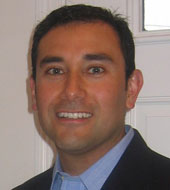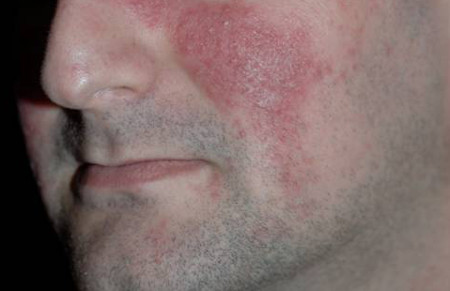Resumen
Definición
Anamnesis y examen
Principales factores de diagnóstico
- presencia de factores de riesgo
- rubefacción
- eritema
- pápulas y pústulas
- telangiectasias
- manifestaciones oculares
- formación de placa
- distribución facial
- cambios fimatosos
Otros factores de diagnóstico
- acné vulgar
- ardor o escozor
- apariencia seca
- edema
- ubicación periférica
Factores de riesgo
- Piel de Fitzpatrick tipo I o II
- baños o duchas calientes
- temperaturas extremas
- radiación solar
- estrés emocional
- bebidas calientes
- antecedentes familiares
- sexo femenino
- comidas picantes
- alcohol
- medicamentos
Pruebas diagnósticas
Pruebas diagnósticas que deben considerarse
- biopsia de piel
- título de anticuerpos antinucleares
Algoritmo de tratamiento
Colaboradores
Autores
Abel D. Jarell, MD

Dermatologist and Dermatopathologist
Northeast Dermatology Associates
Principal Investigator
ActivMed Research
Portsmouth
NH
Divulgaciones
ADJ declares that he has no competing interests.
Agradecimientos
Dr Abel D. Jarell would like to gratefully acknowledge Dr Alexa Boer Kimball, a previous contributor to this topic.
Divulgaciones
ABK has received honoraria for consulting from Intendis and has been an investigator for Intendis and Bayer.
Revisores por pares
Jashin J. Wu, MD
Chief Dermatology Resident
University of California
Irvine
CA
Divulgaciones
JJW declares that he has no competing interests.
Paradi Mirmirani, MD
Physician
Department of Dermatology
Kaiser Permanente Vallejo Medical Center
Vallejo
CA
Divulgaciones
PM declares that she has no competing interests.
Brian L. Swick, MD
Assistant Clinical Professor of Dermatology and Pathology
University of Iowa
Iowa City
IA
Divulgaciones
BLS declares that he has no competing interests.
Thierry Simonart, MD, PhD
Physician
Department of Dermatology
Erasme University Hospital
Brussels
Belgium
Divulgaciones
TS declares that he has no competing interests.
Agradecimiento de los revisores por pares
Los temas de BMJ Best Practice se actualizan de forma continua de acuerdo con los desarrollos en la evidencia y en las guías. Los revisores por pares listados aquí han revisado el contenido al menos una vez durante la historia del tema.
Divulgaciones
Las afiliaciones y divulgaciones de los revisores por pares se refieren al momento de la revisión.
Referencias
Artículos principales
Gallo RL, Granstein RD, Kang S, et al. Standard classification and pathophysiology of rosacea: the 2017 update by the National Rosacea Society Expert Committee. J Am Acad Dermatol. 2018 Jan;78(1):148-55. Resumen
Hampton PJ, Berth-Jones J, Duarte Williamson CE, et al. British Association of Dermatologists guidelines for the management of people with rosacea 2021. Br J Dermatol. 2021 Oct;185(4):725-35.Texto completo Resumen
Del Rosso JQ, Tanghetti E, Webster G, et al. Update on the management of rosacea from the American Acne & Rosacea Society (AARS). J Clin Aesthet Dermatol. 2020 Jun;13(6 suppl):S17-S24.Texto completo Resumen
Thiboutot D, Anderson R, Cook-Bolden F, et al. Standard management options for rosacea: the 2019 update by the National Rosacea Society Expert Committee. J Am Acad Dermatol. 2020 Jun;82(6):1501-10. Resumen
Artículos de referencia
Una lista completa de las fuentes a las que se hace referencia en este tema está disponible aquí.
El uso de este contenido está sujeto a nuestra cláusula de exención de responsabilidad
